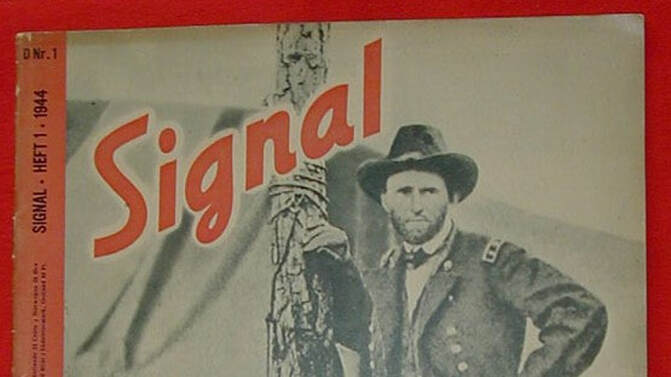|
For Germans, Prussians in particular, the American Civil War presented a great teaching school in the art of mid-nineteenth century warfare. Heros von Borcke comes quickly to mind, but years afterward Der Sezessionskrieg continued to fascinate German miliary theorists. In 1937 five officers of the German high command traveled to America to visit Civil War battlefields. This inspired Mississipian Lawrence Wells to write a novel, Rommel and the Rebel (1986), in which the future field marshal comes to learn blitzkrieg tactics from the famed exploits of Bedford Forrest. In the novel, Rommel bumps into William Faulkner, leading the novelist to remark, “I hate the goddamned Huns but I like Rommel.” But the Krauts weren’t interest in Rebels alone, as shown by the German propaganda magazine Signal. Here, on the front cover of a 1944 issue, printed in English (Signal was printed in thirty languages), stands… …General Grant! The well-known photograph shows the Union general after Cold Harbor. Why Signal chose this image for its cover is a question, I suppose, that only Josef Goebbels could have answered.
1 Comment
|
AuthorStephen Davis of Cumming, Georgia, is author of six books on the Atlanta Campaign, including recently Texas Brigadier to the Fall of Atlanta: John Bell Hood (Mercer, 2019). Archives |
Proudly powered by Weebly

